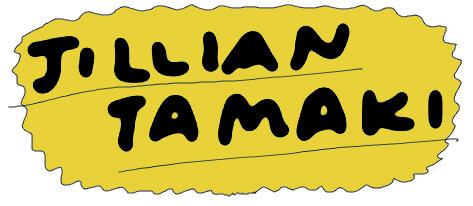SKETCHBOOKING. June 2009.
EDIT 2020: I agree with some of this still! I mostly want to clarify that this is what I’ve found works for me. But I think there are many ways to develop and improve your skills as an artist. And also keep in mind that “sketchbook” need not be a physical book anymore. It could be your instagram page, or even a folder on your computer. I am still reminding myself to not be so precious.
Here are a few thoughts on sketchbooking, based on one of my handouts.
– Your personal work (sketchbook) and jobs (projects) are not separate. Your sketchbook work should be experimental and free and represent what truly interests YOU. Discoveries made in your sketchbook can and should find their way into your paid work.
– Make errors. Try new media. Cheesy and obvious-sounding, but true.
-Set out on a page having no clue where you’re going or what you’re doing.
– Try adopting a stream-of-consciousness approach to your sketchbook. The work need not be “finished” or comprehensive. If you find you are stuck, simply draw what is in front of you, faces, or start with random marks on a page and see where they lead.
-I am constantly amazed at the timidness of students. As if screwing something up a drawing is the worst thing in the world. Who cares? Better some crappy drawings thrown in once in a while versus you drawing the same thing, the same way, every time. Actually, if you DON’T have an occasional dog in there, you’re probably doing it wrong.
-“But that’s the way I DRAW/SEE THINGS!”… there is an intangible difference between a drawing that is “true” and a drawing that is “affected” or “put on”. I try to explain this to students and I feel like I’m a New Age hippie or something. I think it (I’ve mentioned this before) comes down to paying attention, being analytical and “conscious” while you’re crafting an image. Or never getting too comfortable with a way of doing things. Or not being lazy/scared to screw up. See point above.
-There is a cult of sketchbooks or sketchbook fetishism that I understand but also suspect can be limiting. Some people lucky and talented enough to create sketchbooks that are works of art unto themselves. A lot of people aspire to that, but in my opinion, that can devolve into more of an aesthetic exercise… a “look”, rather than a true exercise of creativity. It just isn’t the point. If crafting such work is important to you, perhaps keep two sketchbooks: one for that purpose and one for more rigorous exercises.
-If it helps, work on loose paper. ‘Helps get away from the “object-ness” of the sketchbook itself. Tape things in.
– A good sketchbook page need not necessarily take a long time to complete.
-Don’t work with a “viewer” in mind. It’s unhelpful.
– I rarely make breakthroughs on actual “projects” (paid work). One of the best things I’ve done for my professional self was take a silkscreen class, on my own time.
– Start drawings as if looking through new eyes, or with a new brain.
– Start drawings simply by asking yourself “what if…?”
Please do not reprint, repost, etc. If you are a teacher, you can use the concepts, but please credit me.


